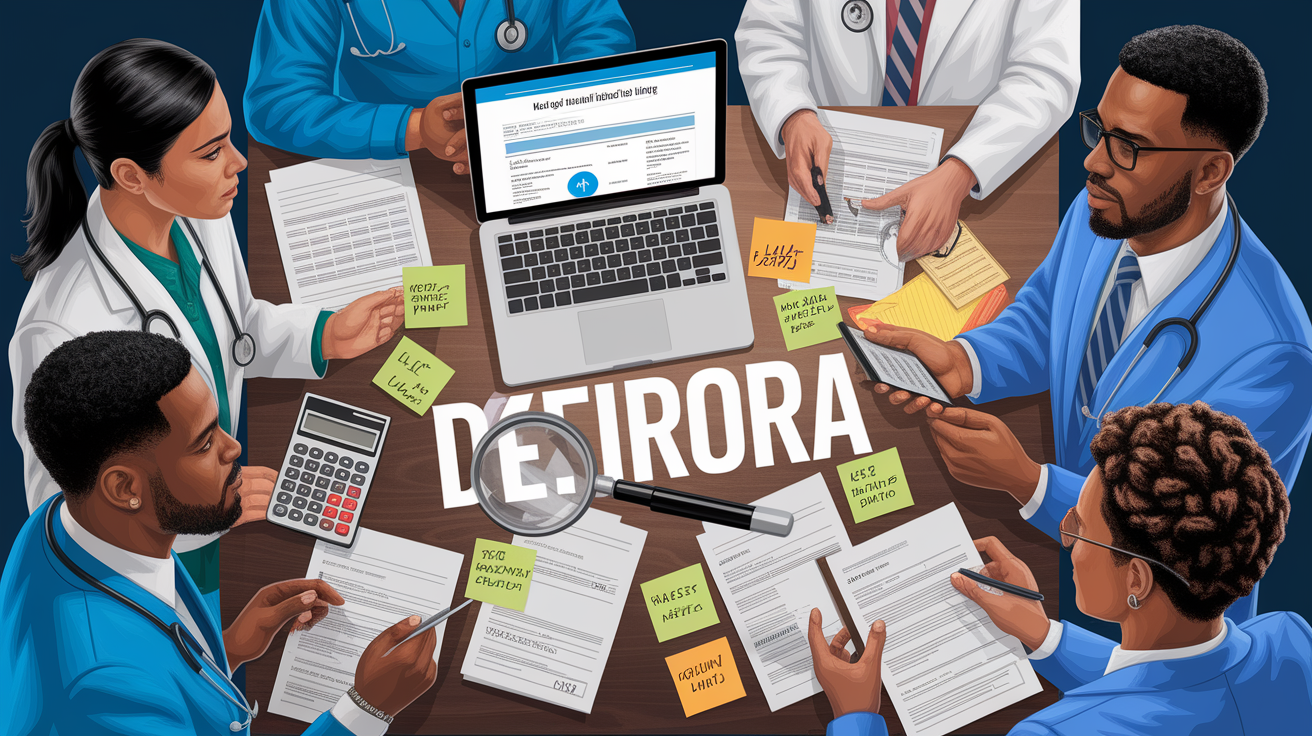Understanding Common Medical Billing Errors
Mistakes happen—especially in the labyrinth of medical billing. When you spot one on your bill, it can feel like standing at the bottom of a mountain with no climbing gear. But every climb begins with seeing the path up.

Medical billing errors are more common than you might think. In fact, research suggests that close to 80% of medical bills contain errors. These mistakes can include wrong patient names, incorrect CPT codes or ICD-10 codes (the technical labels for procedures and diagnoses), duplicate charges, or even charges for services you never received. Sometimes, service “bundles” are incorrectly split apart—a practice known as unbundling—which can inflate costs.
Errors can occur due to human oversight, software glitches, or miscommunication between providers and insurers. That’s why comparing your bill against your medical records and your insurer’s EOB (Explanation of Benefits) is vital. If something looks unfamiliar or suspicious, you may have found the root of a costly problem. The Centers for Medicare & Medicaid Services guide offers useful checklists for identifying these issues.
Gathering Crucial Documentation and Evidence
Facts win disputes. Emotion fuels persistence, but proof gets results.

Before you can effectively dispute a bill or fight an insurance claim denial, you need to build a file of evidence. Think of this as your legal toolkit. Here’s what to include:
- Itemized medical bills: Request a detailed bill showing each charge and corresponding procedure code.
- Explanation of Benefits (EOB): Shows what your insurance covered, denied, or left for you to pay.
- Medical records: Verify the services you actually received match the billed procedures.
- Policy documents: Your health insurance coverage terms, including out-of-network rules or prior authorization requirements.
- Communication log: Document phone calls, emails, or letters with providers, insurers, or claims adjusters.
Copies matter. Keep originals safe, but have duplicates ready to submit during disputes or appeals. This preparation transforms you from a frustrated patient into a proactive advocate for your own healthcare billing rights.
Practical Steps to Contest Medical Bill Errors
So, how do you start climbing that mountain?

First, request an itemized bill from your provider. Don’t assume the summary on your statement tells the whole story. Look for charges for services you didn’t receive, incorrect medical coding, or unbundling errors. If you identify a discrepancy, act promptly.
- Make a quick phone call. Ask for an explanation and, if possible, correction on the spot.
- Follow up in writing. Send a certified letter that clearly identifies the disputed charges and your evidence. Request written confirmation once resolved.
- Document everything. Keep records of communication, names of representatives, and dates.
- Negotiate if appropriate. Even if an error can’t be confirmed, you might secure a discount or repayment plan.
- Escalate when necessary. If the provider refuses to adjust an obvious error, contact state consumer protection agencies or file a formal complaint with medical boards. This dispute guide covers each stage in depth.
Time limits apply in many states, so check your jurisdiction’s rules to ensure you don’t miss your opportunity to correct costly mistakes.
Navigating Insurance Denials and Appeal Procedures
Few letters are as frustrating as an insurance denial. But a “no” from the insurance company does not have to be the final answer.
Denials often happen because of coverage restrictions, missing paperwork, lack of prior authorization, or medical coding errors. Start by reading your insurer’s denial letter closely. This is your map—it tells you the reason for the decision, the appeals process, and your deadline to respond. Deadlines are strict—often 30 to 60 days—and missing them can shut the door to resolution.
To appeal effectively, use a structured approach:
- Request and review documents: Your policy, EOB, and denial explanation.
- Contact the claims adjuster: Clarify exactly what additional information is needed.
- Prepare an appeal letter: Include medical records, provider statements on medical necessity, and any supporting test results.
- Submit within the deadline: Use certified mail for proof of submission.
- Follow up: Persistence and politeness often lead to progress.
These steps are well-detailed in resources like appeal guides and practical tips from WebMD, which can help you contest even complex coverage rejections.
Benefits of Successfully Contesting Bills and Denials
Why fight? Because the rewards are tangible—and often significant.
Correcting medical billing errors or overturning insurance denials can:
- Save you hundreds or even thousands of dollars in overcharges or out-of-pocket expenses.
- Protect your credit score by avoiding unpaid medical debt.
- Ensure accurate insurance records for future claims.
- Encourage better billing practices and compliance from providers.
- Set a precedent that discourages future unfair charges.
Additionally, under laws like the No Surprises Act, you may be eligible for independent dispute resolution in cases of excessive surprise bills, without additional cost increases while the dispute is pending. Patients can access Consumer Assistance Programs and advocacy services that make navigating healthcare billing disputes less daunting.
When you stand up for your financial and healthcare rights, you don’t just save money—you reclaim peace of mind and reinforce accountability in the healthcare system.








